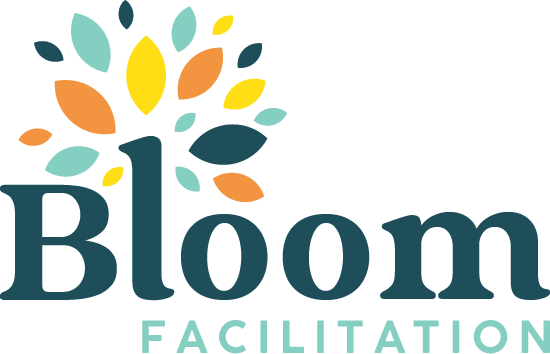“We’re having a team retreat!”
This statement is often an introvert’s worst nightmare.
- Forced interaction with all of their coworkers at once?
- Team building games?
- A whole day, or worse, two days, spent in the company of your company?
Maybe now is the time to plan that long-awaited vacation.
Or in a pinch, it’s time for your long forgotten, but much-beloved Aunt to die.
As a meeting designer and retreat facilitator, I recognize that most employee retreats are planned by extroverts with extroverts in mind. They are eight hours a day packed with interaction and sharing.
In my early days, I was guilty of following this typical format as well. Now when I design a retreat, my goal is to balance the agenda to allow for different types of interaction.
Here are a few things to consider when planning a retreat agenda:
Managing people’s energy
Each activity can serve to increase energy or to allow for people to recharge after expending a lot of energy. I also like to consider both physical and mental energy and think about how both interact to keep people focused and having fun.
For example, most people feel a lull after lunch and need some time to digest and recharge. However, if you have the group sitting and listening to a speaker or watching a video after lunch they may just be lulled to sleep instead of rebuilding their energy.
I find that a semi-physical activity that can be done in pairs or small groups is a nice way to ease back into the program. You could have people pair off and go for a walk to talk over a specific thought-provoking question or have an individual drawing/art exercise where they are reflecting on a theme from the morning.
Balancing large group with individual and dyad/triad interactions
Introverts are often misunderstood as not liking people or wanting to be alone all the time.
Introvert does not equal hermit.
Having a chance to process the ideas or problem-solving in pairs or trios (dyad/triad in facilitation jargon), is a great option for introverts. This has the added benefit of ensuring that everyone in the group has a chance to participate.
Bonus tip: mix up the dyads/triads throughout the day so that people have a chance to interact with different people and so that no one gets stuck with someone they don’t enjoy for very long.
Allow space and room for quiet and privacy
Being in a large room with a large group of people can be very draining for introverts. Even as the facilitator I find it very draining.
I do not like to have a large group discussion format on the agenda for more than an hour at a time.
In between large group discussions, I prefer to divide the group into small groups or pairs for different activities. As often as possible during those smaller group exercises, I give the small groups a chance to choose their own meeting location. I encourage them to find a quiet space in the hall or outside. The more that they can get a break from the big room and have a change of scene, can help them conserve their energy more and not get overwhelmed.
I also like to allow for a couple of breaks during the day and a longer lunch break so that if someone needs to have quiet time or go for a walk, they can take care of their own needs to recharge.
Bonus Tip:
Recently I started using the Loop Engage Earplugs when I am at conferences or other crowded noisy gatherings. They take the edge off and still allow me to hear the people close to me that I am speaking with.
To sum it up
Overall, when you are planning an all-day meeting or employee retreat, think about how to design an agenda that balances group interaction with individuals’ needs for reflection and space to recharge.
It always feels like there is so much to accomplish that you don’t have time for breaks for individual reflection. However, when you work smarter, not harder, you will be amazed at the great results you can achieve.
It is better to leave at the end of the day with your group wishing they had more time together than with everyone exhausted, mentally spent, and ready to plan their next vacation or funeral excuse.
Keep learning
For more information about introversion and leadership, I highly recommend Susan Cain’s book, “Quiet” or her site, Quiet Revolution.
